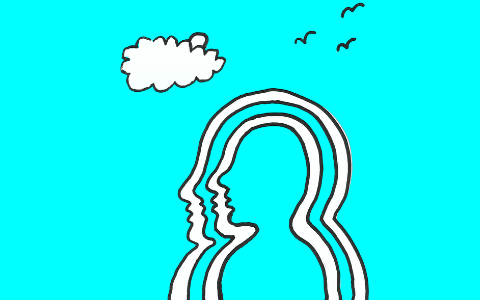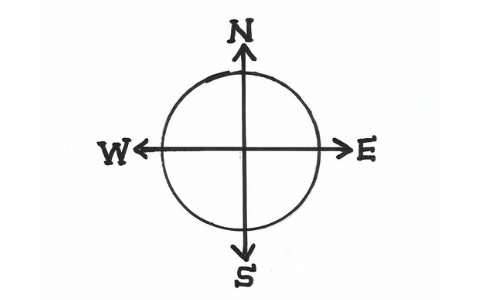Equality, Inclusion and Diversity
As therapists we wish to be inclusive and authentic. We aim to be culturally competent and responsive to our clients’ experience of difference. We want to accommodate gender, sexual and relationship diversity and understand disadvantages based on skin colour, migration status or other cultural criteria. We have heard of and reflected on intersectionality.
In my own journey, I have come to think that accommodating and understanding diversity is a good start, but in itself insufficient to competently include and respond to our clients needs. To me, being inclusive as a therapist is a process which requires ongoing reflection and a good knowledge of my own limits and edges. It is about a shift in making sense of the world around me and what I may represent within it; about the ability to mirror complex experiences and about considering the fallout from pathologizing and non-affirmative practice. And it is about kindness.
Re-drawing the Map
When looking at cultural conversations around sex, sexual orientation, and relationships, be it in media, in medicine, laws, religion or elsewhere, it is assumed that people are heterosexual and monogamous until you see otherwise. And yet, our clients may be gay, straight, bisexual, asexual, predominantly one or the other, non-monogamous, polyamorous, or have questions around sex or their sexual orientation which they would want to bring into therapy. Therapy needs to provide the space to ask these questions and to encourage exploration, including with heterosexual identifying individuals and couples.
Our language has for a long time assumed that when it comes to gender, the world is binary, that there are two opposite sexes (one slightly inferior to the other). Trans, non-binary or gender fluid experiences are traditionally so invisible, that, as a society, we still struggle to settle on the vocabulary to bring difference into being. We still discuss processes to amend laws which enable full participation in society and making space. Therapy offers an opportunity to affirm, to settle on language which feels right and inclusive and to create visibility. In affirmative counselling, we can address and respond to clients’ experiences of not being held, to feel disconnection from themselves and others, and to have been subjected to cumulative stress and trauma.
In a predominantly white culture, most people who do not fall into this bracket or speak with an unfamiliar accent would have been asked where they come from on many occasions in their lives, suggesting that it can’t be here. Relationships may inhabit a cross-cultural space; conflict may arise between generations. Migration, acculturation, cultural appropriation, and feelings around belonging, difference and being treated with respect are central aspects of culturally competent therapy. In conversation, we find ways to see and mirror people as themselves, in their specific context.
Inclusive psychotherapy is attentive to intersectionality, the place where social categorisations, such as race, class, gender, sexual orientation overlap, and interdependent systems of discrimination and disadvantage emerge. Every therapeutic process becomes a process of re-drawing the cultural map, shuffling up hierarchies and making space for experience.
Limits and Edges
In relation to my clients, I too am likely to become a representation in each persons’ cultural map. I too am seen as a representation of race, migration or education status, sexual orientation, gender and age.

In a workshop I recently attended on Gender, Sexual and Relationship Diversity (GSRD) lead by Meg-John Barker we were asked for several self-reflections which I used to consider my own strengths, limits and edges. We thought about labels and about how we may respond to labels which clients give themselves. We looked at our experiences in intersectional spaces, our comfort zones, discomfort and reflected on the impact of cultural norms on marginalised groups. Meg-John Barker speaks on the subject with great kindness, competence and up to speed, which is not an easy task as in their own words “gender is moving so fast, you can feel the wind in your hair”.
Differences impact on the process in therapy. They impact on clients’ decisions who to tell something and what or how much they wish to say, depending on the therapist’s position in their cultural landscape. They call on therapists to keep checking our own comfort zone and how to address discomfort if it is likely to impact on clients with questions around it. As a therapist, I need to be clear how I respond to labels which clients give themselves and avoid misgendering or mislabelling. Clients benefit, when I am genuinely open, fine with what they present and able hold their anger, frustration and alienation. Confidentiality and the clients’ processing time ought to be respected and clients need their counsellor to be able to know, when to refer them on to someone who is better placed to help.
Kindness
While at Meg-John Barker’s workshop, I understood that self-reflection and competence are only part of the picture when it comes to inclusiveness. We also need to be able to look with kind eyes on people, on each other and on ourselves, in therapy and beyond.
Equality, inclusion, and diversity are subjects which often divide cultural conversation, sometimes loud and sometimes violent. It can provoke feelings of inadequacy, rejection, incompetence, display of hate and fierce defence of privilege. As a therapist, I am unlikely to always get it right. There will always be something popping up which I haven’t heard about while people try to structure their lives in a “sane” manner. But being truly open, generous, considerate of people’s feelings and questioning of our own place in the cultural spaces we inhabit is a language which is universally understood, and which offers a good opportunity to demonstrate acceptance and to move a conversation and process forward.
by Gabriele Panteli (she/her)

